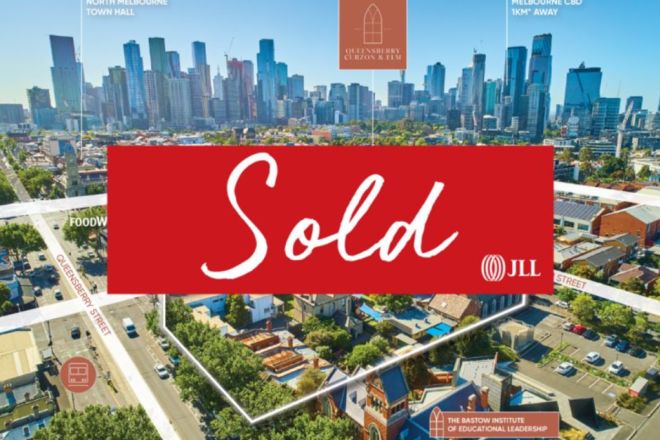
God-given opportunity for major inner-Melbourne property
Continuing its decade-long liquidation of property that reflects this secular age, its quest to clear onerous debts and redeploy the redeemed millions into new projects, the Uniting Church has just brought to market an extraordinary collection of buildings in North Melbourne.
On a 4882-square-metre block that JLL agent Jesse Radisich says “is incredible for a landholding that big on the doorstep of the CBD”, is a historic church with one of the city’s highest spires, a residential terrace row, a hall, a manse, a parsonage and a modern corner commercial building.
Although the church, built in 1879 for the well-established North and West Melbourne Presbyterian communities, was made to accommodate 1000 people, it, like the 1868 manse, is basically not in use these days.
The beautiful bluestone church hall that fronts Elm Street and that sometimes served as a school building is currently the place of Sunday morning worship for the Congregation of St Mark The Evangelist which took on the name change in 1995.
As they are, the residential properties and the commercial tenancies are returning an impressive $361,320 a year.
While the “forthcoming sale” advertising boards of this triple-street-front property have been up all summer, it was only placed onto realty websites in the past week and has elicited “a huge response because it’s got so much potential”, Radisich says.
Those giving their attention to the expression of interest campaign – that the agent hints could hover around $10 million “for the whole lot” – include “developers, owner-occupiers, other church groups and not-for-profit organisations; there’s a whole lot of interest”.
With their age and provenance, the church and several other site structures that add up to a “unique village-like precinct” are heritage listed.
But with vision (and planning permission), Radisich believes the Gothic revival church with the 46-metre spire that began life as the Union Memorial Church may have scope for a residential or apartment adaption.
The Victorian-era manse could be feasible for hospitality or, again, for residential use. The 1911 Federation terraces fronting Queensberry Street could be ripe for renovation. Even the sweet parsonage tucked into the side of the site is of aesthetic interest.
While the commercial buildings that sit on the corner of Curzon and Queensberry Streets sit oddly with the collation, they do combine both office and residential tenancies and have scope for improvement – especially in an inner-west area that Melbourne City Council has branded the Arden Precinct with plans for 15,000 residents and a projected 34,000 workers.
“We’ve got a lot of confidence in the growth story of North Melbourne,” Radisich says, “especially being so close to the huge employment hub of the hospital precinct on Flemington Road.”
Historically, and working on what began as an 8093-square-metre grant of land in 1854, the then Presbyterian Church of post-settlement Melbourne held its first service in 1855 in a suburb festooned with tents erected by the diggers attracted to Victoria’s gold rush.
In 1877, the church sold half the site to the Education Department, which built the attractive and towered brick school which has more recently been adapted as the Bastow Institute of Educational Leadership.
Behind the school today is a contemporary addition that shows how well the old and new can work harmoniously while preserving the heritage feel of a whole inner-city block only a street south of North Melbourne’s lovely commercial Errol Street.
Keeping churches as centrepieces of redeveloped sites has lately been brilliantly exemplified by the evolution of Wesley Place, another Uniting Church property on Melbourne’s Lonsdale Street. It spawned tall new office structures and last year won Cox Architecture and heritage experts Lovell Chen a heritage award from the Victoria chapter of the Australian Institute of Architects.
The new insertions into the Wesley Place site showed, the judges said, how such adaptions can be so successfully “styled to site” to become “a tour de force in the art of conservation”.
It shows how wonderful things can be done in reworking what Radisich calls “an amazing collection of buildings which feel like you’re in your own little precinct”.











